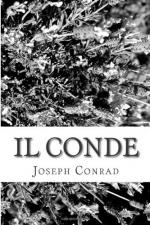|
This section contains 521 words (approx. 2 pages at 300 words per page) |

|
On the most obvious level, "Il Conde" describes the decline of Europe's aristocratic class, as it enjoyed its Indian summer in the Edwardian period prior to World War I. In this respect, the story displays a similarity to the vision of Anton Chekhov in his famous drama The Cherry Orchard (1904), which depicts the decline of Russian aristocracy. Obviously, Joseph Conrad's count who owns lands somewhere north of the Alps is a symbol of the declining landed aristocracy of Europe. (Conrad later acknowledged that his title was incorrect, since "conde" is Spanish, and the correct Italian title for his main character should have been "Il Conte.")
However, the story contains a social resonance beyond its surface historical references. As a man victimized by an arrogant and ruthless robber, the count is a man who transcends his membership in a social class; he also becomes a symbol of...
|
This section contains 521 words (approx. 2 pages at 300 words per page) |

|




